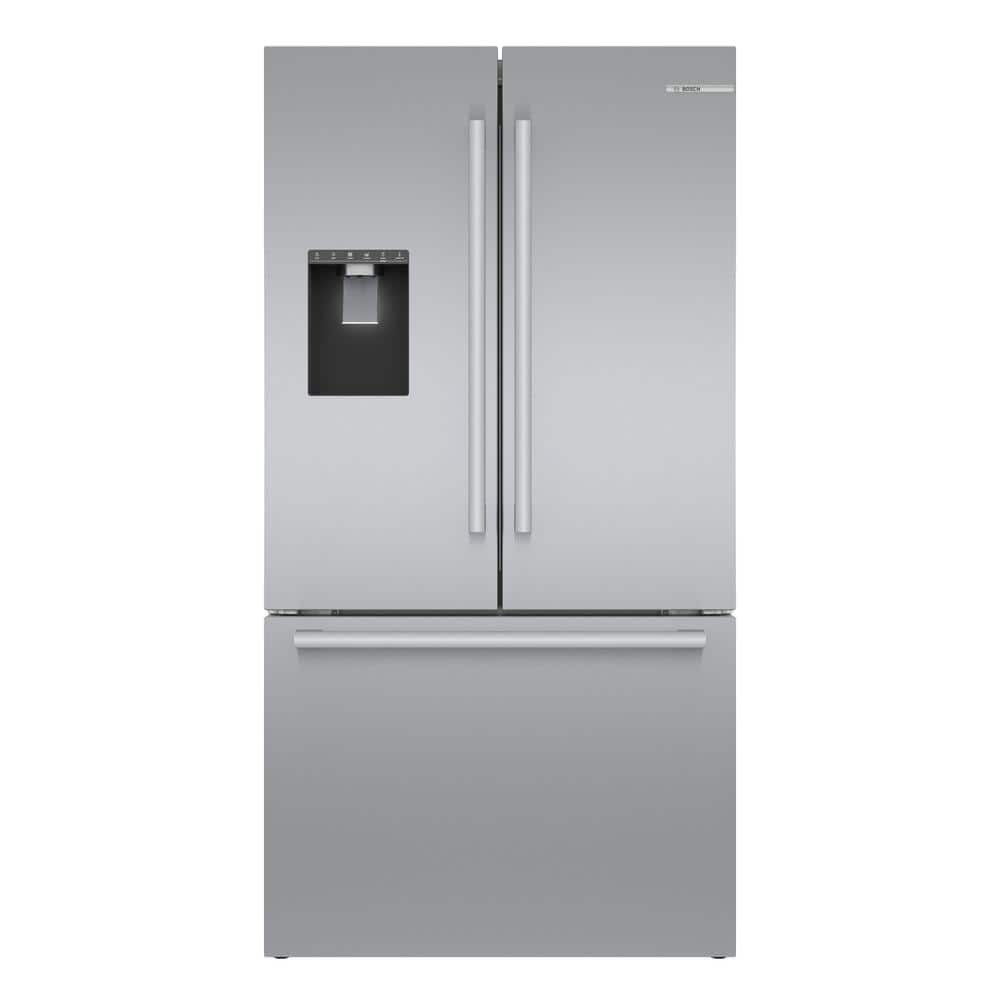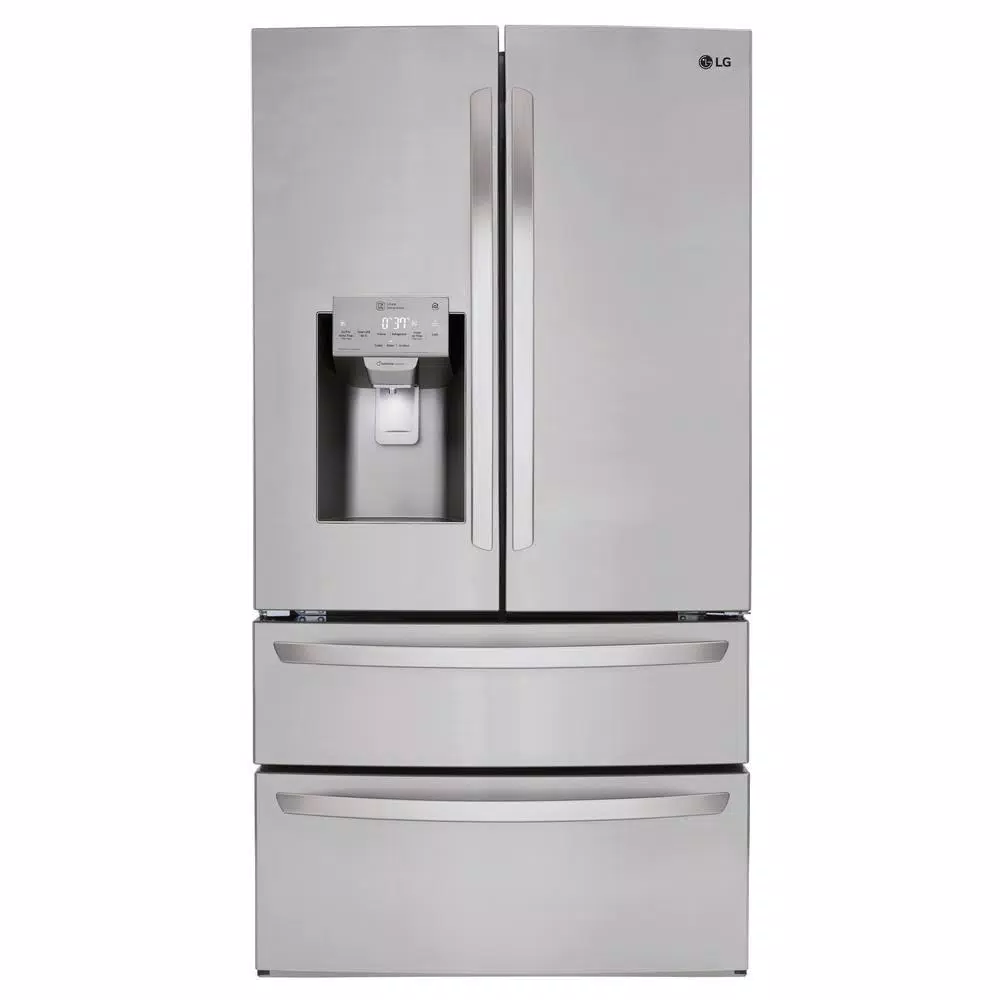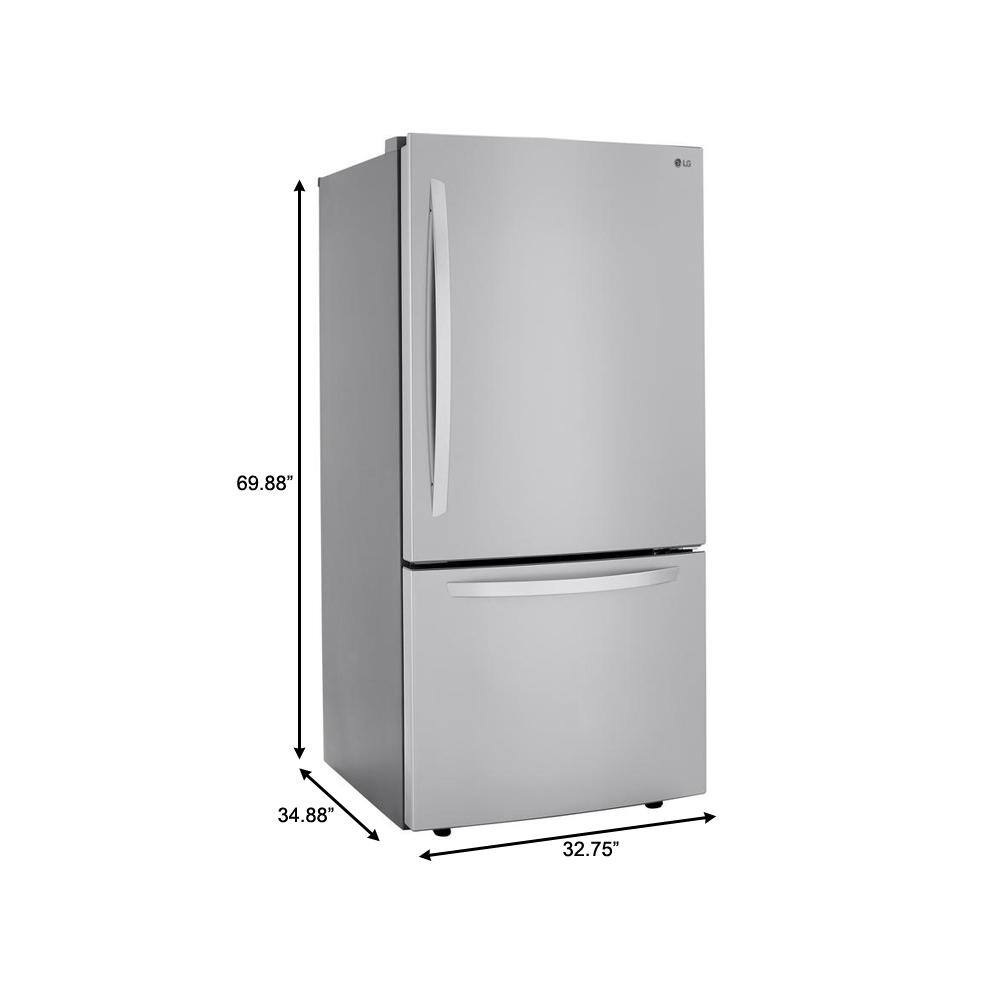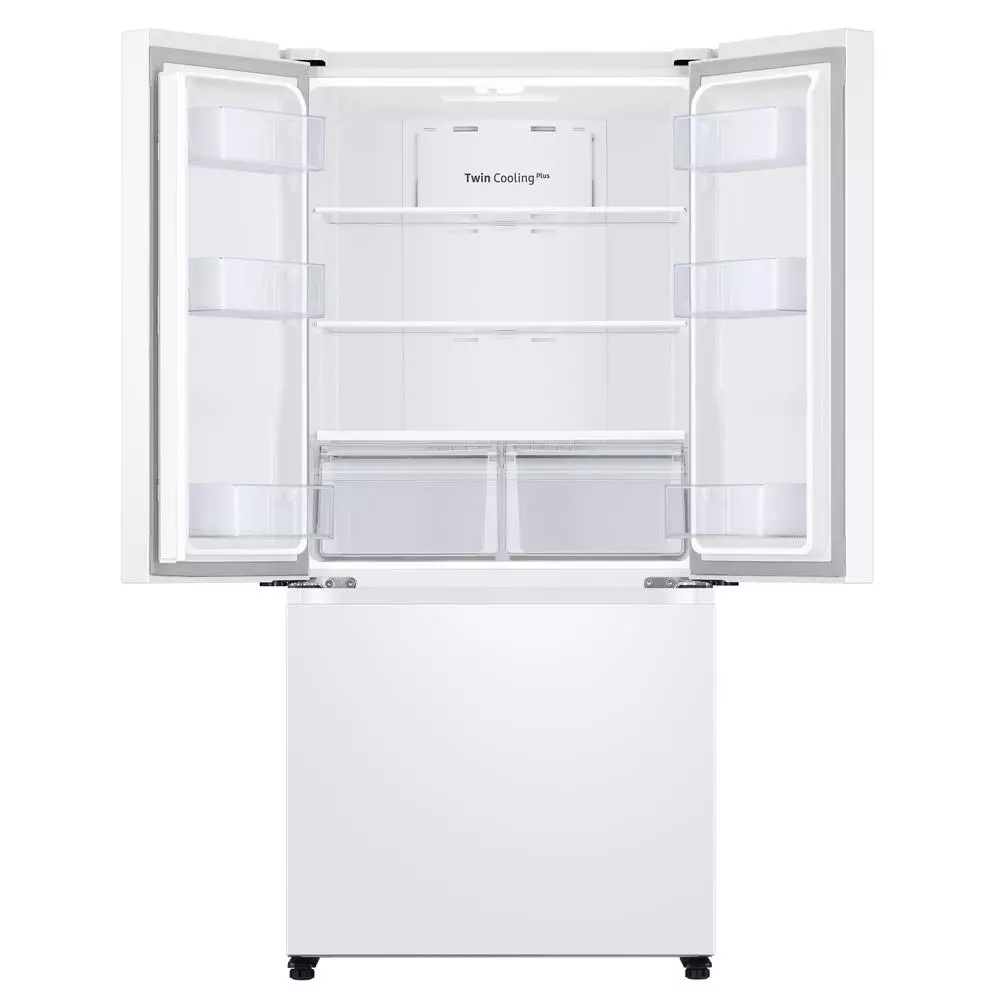Bosch 500 36 in. 21.6 cu. ft. French Door Refrigerator in Stainless Steel with Fastest Ice Maker, Counter Depth
QuickIcePro System creates filtered ice, replenished fast. Sits flush with the countertop for a built-in look and feel. Home Connect application allows control via a smart device.
Introducing the QuickIcePro System, the industry’s fastest refrigerator ice maker, only in the new Bosch counter-depth refrigerator. Bosch’s QuickIcePro System lets you enjoy freshly filtered ice that’s replenished fast. So you can say farewell to frequent ice runs to the store. Based on single ice maker production rates during a 24-hour period, measured per IEC standard and manufacturer user’s manuals, for brands identified in US and Canada TraQline as freestanding French door bottom mount refrigerators.
- ENERGY STAR Qualified for year round energy and money savings
- Innovative QuickIcePro System combines three technologies to produce fast freshly filtered ice in your refrigerator, (1) Rapid ice replenishment for ice on demand, (2) UltraClarityPro water filter reduces, 99.9% of sediments and (3) hands-free filling with BottleFill technology
- Advanced ice maker creates crescent-shaped ice cubes, easily accessible from the exterior refrigerator door, need additional ice storage, Fill up the freezer accessory bin for additional ice storage
- Bosch’s industry-leading water filter, UltraClarityPro, removes an astonishing >99.9% of sediments that may be found in your water, including harsh elements like chlorine and chloramine
- Premium and modern touch control display is strategically placed for easy accessibility, and allows you to control the features of your refrigerator with the touch of a button
- Featuring VitaFreshPlus, which balances temperature and offers customizable humidity, for the optimal environment for your fruits and vegatables
- Full width drawer offers ample storage for fresh produce, while allowing for quick access and full visibility with the clear bin
- Transparent door bins frame the interior of the refrigerator, creating ample space for all of your needs, this refrigerator boasts seven door bins total, two of which are wide gallon door bins, easily accommodate two one-gallon containers each
- A generous 20.8 cu. ft. capacity is made even more spacious with flexible storage features like customizable shelves and adjustable door bins
- 2-tier layered freezer drawer system creates extra storage for frozen items, from pizza boxes to frozen waffles, the spacious shelving system, paired with LED lighting, easily displays all freezer items, so food doesn’t get buried and forgotten
- Store oversized platters with ease until you’re ready to serve them, or store snacks for quick access and easy visibility
- Freestanding refrigerator sits flush with the countertop, features hidden hinges, and discreet tucked away feet, all to give you a true built-in look and feel
- Interior shelves are designed with high quality tempered glass and stainless steel fronts, half-width shelves are easily adjustable to accommodate all your grocery needs
- Experience crisp, beautiful LED illumination from corner to corner
- Home Connect lets you easily manage your Bosch refrigerator from the convenience of your smartphone or tablet. Whether adjusting the brightness of your refrigerator or receiving a notification when you left the door ajar, master your day with Home Connect
- Keep your kitchen looking beautiful with an easy to clean stainless steel exterior. Bosch high quality stainless steel does not require stainless steel cleaner, just the wipe of a damp cloth to properly clean
Additional information
| Depth (Excluding Handles) | 28.75 |
|---|---|
| Depth (Including Handles) | 31.125 |
| Depth (Less Door) | 25 |
| Depth With Door Open 90 Degrees (In) | 43.375 |
| Height to Top of Door Hinge (in.) | 70 |
| Height to Top of Refrigerator (in.) | 70 |
| Product Depth x Height x Width (in.) | 31.125 x 70 x 35.625 |
| Refrigerator Width (In.) | 35.625 |
| Certifications and Listings | CSA Listed,Energy Star,UL Listed |
| Manufacturer Warranty | One-Year Limited Warranty |






by Nee
I love the outside design, however, the door shelves are too short, things tend to fall forward when opening the doors. I am experiencing a leak under the bottom drawer that a service repairman is trying to find the source. Nothing big but annoying
by Tammy
I am happier then I thought with this purchase. Fits perfectly in our new kitchen and while I was a little nervous about going with a counter depth unit it has plenty of space. We already had a Bosh dishwasher and the profiles are very pleasing.
by Janie
I love the look of this Frdige. The lighting on the inside make it easy to see everything in there. My only complaint is the noises it makes. Sometimes I think it is the ice maker. Which runs more than I use it. I get one glass full of ice every morning. But it’s makes a whirring sound as if it it’s cooling or making ice. It’s so constant that I actually notice when it isn’t making that noise.
by Bill
Runs quietly, provides ice cubes and crushed ice as well as water in the door perfectly. Love the interior and exterior lighting. And it looks great in our kitchen.
by Marsha
Love the refrigerator! There’s so much room and it’s very easy to organize. Finally I can find everything.
by David
We have had our Bosch over 6 weeks. It cranks out the ice like crazy. It’s sleek and friends have complimented the style and fit. The French doors are great for putting in a pizza or something a wee bit wider. Freezer section is huge with many compartments for storage. Loving it!
by Ken
Aseticly pleasing to the eye, engineering of interior space is superb, lighting is excellent, works and performs as advertised. Would recommed this refrigerator to any one who asks.